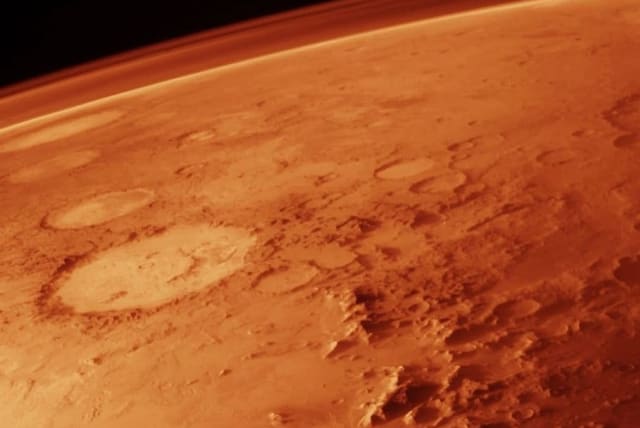UFO enthusiast: Alien spotted watching NASA probe on Mars

Self-proclaimed UFO and alien expert Scott Waring says a NASA image depicts a small, indistinct figure with a pink body sitting on Mars.
UFO enthusiasts and researchers are convinced that they have discovered an alien in an official NASA image.
The image in question depicts a small, indistinct figure with a pink body situated on the rocky surface of Mars. Although NASA released the original image in April 2021, the supposed extraterrestrial sighting was only found in 2022 by self-proclaimed UFO and alien expert Scott Waring.
Referring to the mysterious figure, Waring said: "Everyone here knows I love to comb through NASA photos. Well, I came across something unique...something that is 100% proof of intelligent life. There is a person laying down watching the NASA Mars rover from a safe distance away. The person is about 1 foot tall, .3 meters and is laying down, pinkish upper chest, neck and face, radish hair, wearing a dark suit, but has a grey object over one shoulder...looks like a backpack of some sort. There are even footprints behind the person leading up to the location they chose to lay down at."
Warning immediately uploaded this image to his blog, UFO Sightings Daily, where he meticulously analyzed it. Based on his observations, he concluded that the creature captured in the image stands at approximately 30 cm tall and was lying down while observing the probe. There are even footprints behind it, leading to the spot where it chose to recline.
Are you convinced?
CNET's space expert points out that Mars is an incredibly inhospitable place, and to date, scientists have not discovered any evidence of ancient microbial life there, despite ongoing research.
Of course, critics may argue that this alleged alien figure is simply a rock formation that bears a resemblance to an extraterrestrial being. However, why let facts dampen this fascinating idea?
This phenomenon is actually known as pareidolia.
It refers to a psychological tendency where individuals perceive vague stimuli as familiar and meaningful. It involves the brain's cognitive bias of recognizing familiar patterns in unclear pictures and objects, particularly in terms of identifying the appearance of faces within such stimuli. A prime example of pareidolia is the human inclination to recognize face-like shapes or figures in the lunar or Martian surface features.
Jerusalem Post Store
`; document.getElementById("linkPremium").innerHTML = cont; var divWithLink = document.getElementById("premium-link"); if (divWithLink !== null && divWithLink !== 'undefined') { divWithLink.style.border = "solid 1px #cb0f3e"; divWithLink.style.textAlign = "center"; divWithLink.style.marginBottom = "15px"; divWithLink.style.marginTop = "15px"; divWithLink.style.width = "100%"; divWithLink.style.backgroundColor = "#122952"; divWithLink.style.color = "#ffffff"; divWithLink.style.lineHeight = "1.5"; } } (function (v, i) { });
